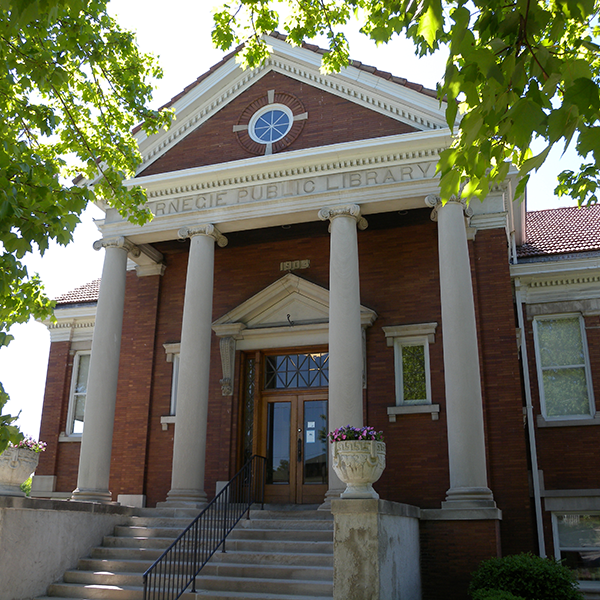Salem Public Library
Unlike most municipalities in Indiana that received Carnegie Libraries, Salem enjoyed a long-standing tradition of lending books. The Salem Library Association was organized in 1818 and its first collection was housed in the courthouse. This facility of 200 volumes remained in service until 1830. In 1855, 375 books were donated to the county by William McClure of New Harmony, as part of a program for the "mental improvement and instruction of the workman."
In the same decade, another philanthropist donated money for township libraries, of which Salem was a beneficiary. A local philanthropic group called the Fort Nightly Club solicited Carnegie donations in 1900. For $13,755, local builder, Ambrose Shrum, erected the building.
The Salem Carnegie Library is one of a total of 164 public library buildings funded by philanthropist Andrew Carnegie in Indiana. Indiana ranked first among all states in both the number of communities receiving buildings and the number of buildings received.
Built before 1908, a milestone in Carnegie's philanthropic vision, the Salem Library reflects the more elaborate floor plans, finer materials and architectural detail than libraries built after. During the period before 1908, local communities were permitted complete control of architectural design.
In Carnegie's opinion this resulted in extravagant buildings which were ill-suited to library uses, a condition which was corrected at the suggestion of John Bertram, Carnegie's private secretary. The library construction program lasted from 1886 through 1917, terminated by the cost of materials during World War I.
In the same decade, another philanthropist donated money for township libraries, of which Salem was a beneficiary. A local philanthropic group called the Fort Nightly Club solicited Carnegie donations in 1900. For $13,755, local builder, Ambrose Shrum, erected the building.
The Salem Carnegie Library is one of a total of 164 public library buildings funded by philanthropist Andrew Carnegie in Indiana. Indiana ranked first among all states in both the number of communities receiving buildings and the number of buildings received.
Built before 1908, a milestone in Carnegie's philanthropic vision, the Salem Library reflects the more elaborate floor plans, finer materials and architectural detail than libraries built after. During the period before 1908, local communities were permitted complete control of architectural design.
In Carnegie's opinion this resulted in extravagant buildings which were ill-suited to library uses, a condition which was corrected at the suggestion of John Bertram, Carnegie's private secretary. The library construction program lasted from 1886 through 1917, terminated by the cost of materials during World War I.
Listing Details
Views
4,658
Map



